The washing machine noises and buzzes: causes and elimination of the problem

The washing machine contains moving parts, which is why it sometimes makes noise and hums. But in some cases, such sounds become unreasonably strong, which not only causes inconvenience, it also instills anxiety.
Standards of noise level during the operation of the washing machine
Of course, first you need to figure out what the normal sound of a working car should be, and what volume does not correspond to the norm. There can be no subjectivity here. Many advanced models of the latest generation should emit a sound no louder than 55 dB during washing, and no louder than 70 dB during spinning. To make it clearer what these values mean: 40 dB is quiet conversation, 50 dB is most common background sounds, and 80 dB is the volume of sound near a busy highway.
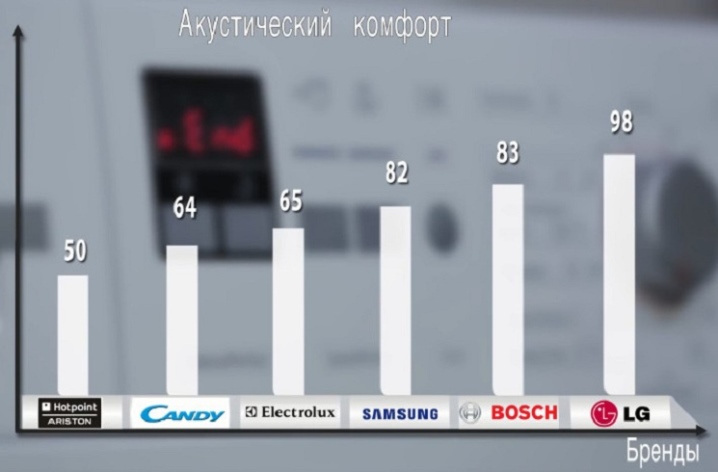
But it should be borne in mind that the volume of many sounds emitted by the washing machine is not standardized. Usually not mentioned even in accompanying documents, let alone advertisements:
- sound when pumping water and pouring it into the drum;
- sound when the drain pump is running;
- drying volume;
- the volume of water heating;
- clicks when switching modes;
- signals about the end of the program;
- alarming signals.

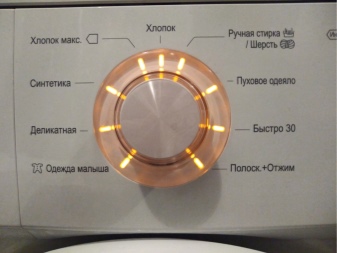
Sound Troubleshooting and Troubleshooting
One must be able to find the causes of such a problem and choose good ways to eliminate it.
Incorrect installation
Installation errors provoke strange loud noises during operation much more often than inexperienced people believe; quite often the car makes a noise due to the fact that it is not level. The building level will help to check this as accurately as possible. Also, the sound volume will be excessively high when the unit touches a wall or other hard surface. No wonder: solids are excellent resonators and amplifiers of acoustic vibrations.
Different manufacturers recommend a different distance from the wall, to the bathtub, to the cabinet, and so on.
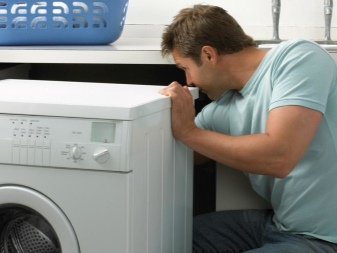
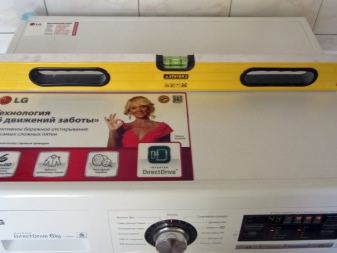
Shipping bolts not removed
Sometimes they simply forget to unscrew the transport bolts, or consider it not important enough - and then they are surprised at an incomprehensible noise. In this case, it is necessary to urgently turn off the machine and remove unnecessary fasteners. If you don't, the main parts of the device may be irreversibly damaged... The drum is particularly affected. But it may not be just the bolts.

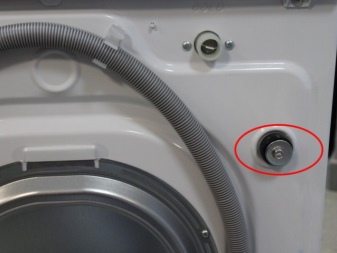
Foreign object hit
Complaints about the noisy operation of the machine are often associated with the ingress of foreign objects. It doesn't matter if they are spinning with the laundry or stopping the drum - you need to act immediately. Often, foreign things end up inside because the pockets of the clothes have not been checked. Service center technicians extract all sorts of things - seeds and rings, coins and bracelets, screws and bank cards. It's hard to even say that it never ended up in the drum during washing.
But in some cases, parts of the clothes themselves clog the car... These are belts, and various ropes and ribbons, and buttons. Sometimes individual fibers and pieces of fabric are damaged. Children's pranks or the result of animal activity cannot be ruled out either.
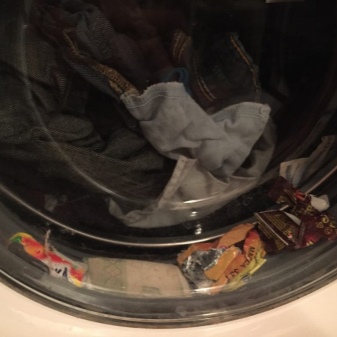
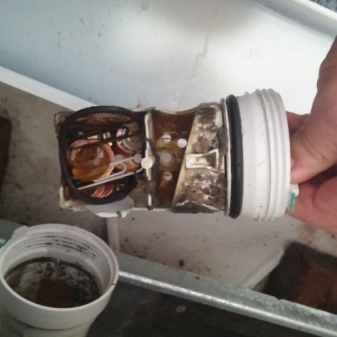
Important: the blockage can enter not only through the loading door, but also through the detergent container - this is also too often forgotten.
The easiest way to deal with the problem is if a foreign object is noticed when drawing water or at the initial stage of washing. In this case, you need to urgently cancel the running program. But it should be borne in mind that some washing machines do not drain water when turned off. Then you will need to give an additional command. Sometimes it is necessary to drain the water using emergency devices.
Much worse, if not just a grinding sound is heard, but the harmful object itself is stuck. It is imperative to remove it from the tank. Even soft items like handkerchiefs can become a source of trouble over time. Removing foreign objects is possible either through a drain filter, or by removing the heating element (with partial disassembly of the machine).
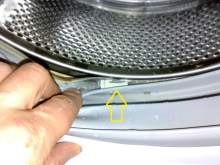


Broken bearings
When the bearings are damaged, the machine crunches and clanks. Remarkably, at high revs, the volume of the crunch increases dramatically. Additional evidence that the bearings are broken are:
- deterioration of spinning;
- drum imbalance;
- damage to the edge of the cuff.
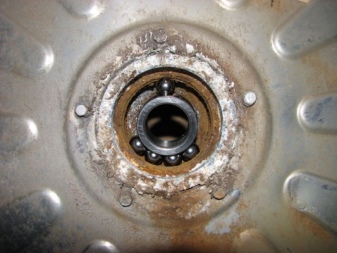
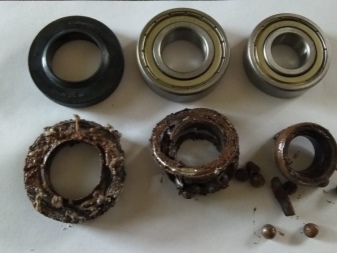
But you still have to carry out a thorough diagnosis of the main components of the machine. Partial disassembly in this case usually boils down to removing the rear panel. The sequence of manipulations is determined by the characteristics of a particular model. In any case, you will have to provide good lighting.
Important: in a number of modern models, the tank cannot be disassembled, and after disassembly it will have to either be glued again or changed.
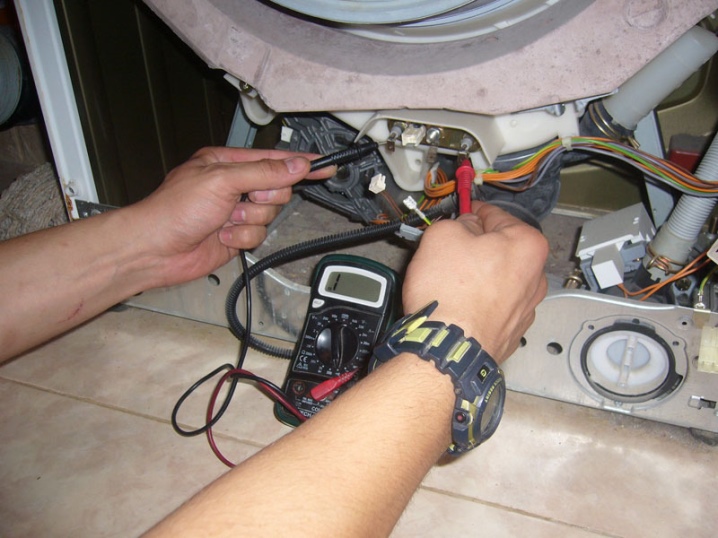
Loose pulley
The machine often rattles also due to excessive loosening of the pulley (drive belt). As a result, the part holds on the axis worse, and begins to make very strong movements that are not provided for by the design. Most often, this situation is recognized by the fact that something clicks inside. At the same time, instead of a correct, orderly movement, the drum usually begins to slowly turn in different directions. They act like this:
- remove the back cover;
- tighten the nut, which is loosened (if necessary, change it and the pulley itself);
- return the back panel to its proper place.
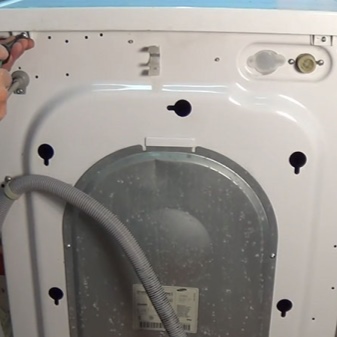
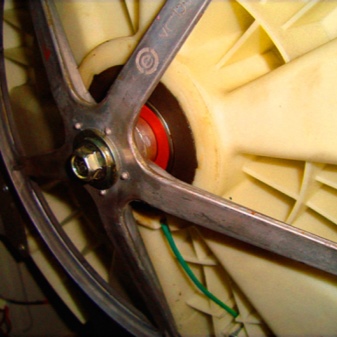
Counterweight problems
When the machine knocks and cracks loudly during rinsing and spinning, it is most likely that the counterweights do not work. It is usually noted that some kind of "metal" blows are heard. Failure to inspect the counterweights immediately can lead to serious drum problems. Its center of gravity begins to constantly and unpredictably shift, which does not exactly correspond to the intention of the designers.
A basic visual inspection helps to determine if there are any problems with the counterweights.

Other options
The washing machine beeps for a variety of reasons. Such a defect occurs during the operation of a wide variety of products of both world famous and rarely used brands. The frequency of the squeak is very different. In some cases, it is accompanied by indicator light signals. It should be borne in mind that the squeak is sometimes only annoying.
But in some cases, it is accompanied by the occurrence of failures. This is reflected in the reset of settings and running programs. Discharges occur randomly, usually every 3 or 4 washes. Problems are almost always associated with the control board or with the wires that are used to communicate with it. We'll have to carry out deep analysis and comprehensive diagnostics, sometimes using professional equipment.
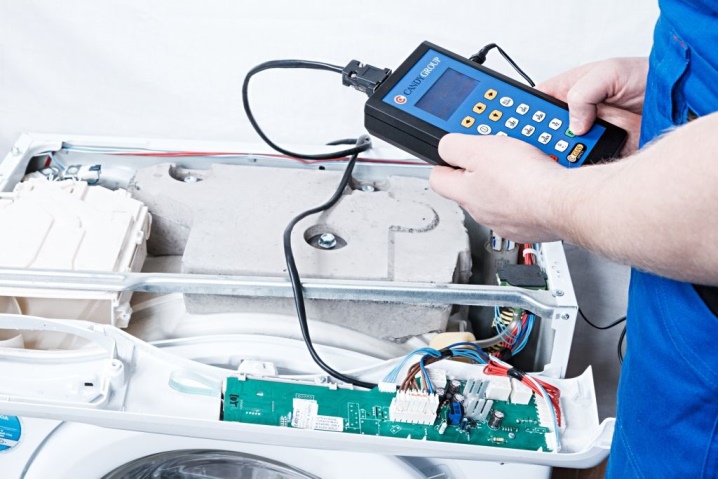
But it is equally important to know why the car hums a lot. This can be due to the problems already described (problems with the pulley, with the counterweights). The problem is sometimes provoked by the fact that the main parts are badly worn out. An abnormal whistle may also testify to the same. You can check this even in the disconnected state.
If the machine makes a whistle when washing, after turning off you need to try to spin the drum. Uneven movement of it confirms that the cause is wear of the bearings. They are replaced with their own hands (you do not need to be afraid of difficulties and call specialists).But sometimes there is another problem - the engine hummed when the machine was turned on. This is usually associated with a breakdown of the electric motor brushes and continues even after water is poured.
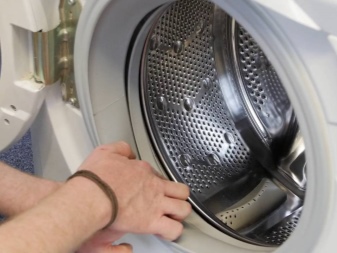
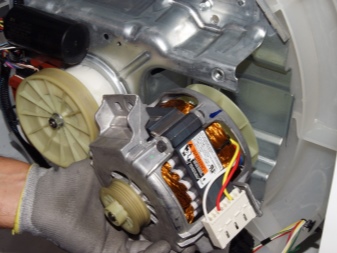
But if the car hums without pouring water, there is a failure of the intake valve. Noise can also be associated with:
- cracking of the case;
- loosening bolts on shafts and motors;
- friction of the cuff against the drum;
- problems in the pump;
- jammed drum.

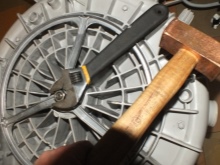
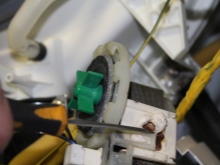
Prevention of malfunctions
So, the causes of noise in the washing machine are varied. But all users can prevent many of these defects, or at least make them less frequent. The most important rule here is not to overload the device. It is also worth considering that washing several times in a row without a break for at least 1-2 hours contributes to the wear of the machine. There will be less extraneous sounds if you use a wash at a high temperature only when there is a real need for it.
By cleaning the filter and pipelines, they contribute to the removal of impurities from the drum when draining the water. By wiping the cuff after each wash, prevent delamination and contact with the drum. It is also very important to use soft water.
If this is not possible, the use of softeners helps to slow down the accumulation of scale on the heating element.

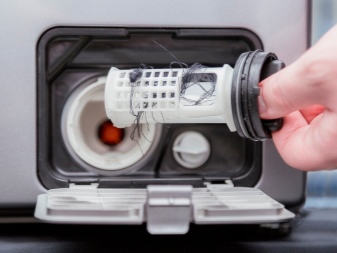
There are a few more recommendations:
- wash all things containing metal elements only in closed bags;
- periodically rinse the drain filter;
- ventilate the drum after finishing washing;
- fasten all hoses and wires neatly;
- comply with all rules of transportation and connection to communications;
- follow all other instructions in the instructions.
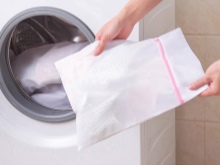

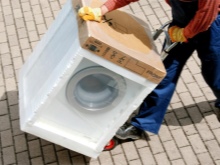
See below for the causes of washing machine noise.













The comment was sent successfully.